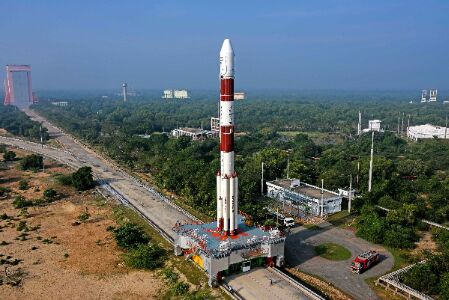Keeping watch

This week, the Indian Space Research Organisation inaugurated its SSA(space situational awareness) Control Centre in Bangalore. This was in response to the Centre's mandate for a facility that would bring together all SSA activities that have been carried out across the country by ISRO for decades.
The facility will not only have the ability to concurrently process data from the various auxiliary facilities and also remotely operate these very same observational facilities.
This is part of the expected follow-up to the 2019 Project NETRA which was initiated by ISRO to act as an early warning system to detect space hazards to Indian satellites. The idea behind the overall initiative was to give India comparable space situational awareness capabilities as other major space powers. But this is not a simple matter of pride.
Space debris is a complex problem that the world has been facing for several decades now. Its complexity is amplified by the fact that there is some disagreement over the seriousness of the problem in question. Some say that it is a problem that will fix itself. Others say that it could be the greatest crisis to humanity's quest of reaching for the stars. Space debris is a mix of man-made object debris and natural particles such as meteoroids. Orbital debris or man-made debris is defined as any man-made object in orbit around Earth that no longer serves a useful purpose. This can include everything from non-functional spacecraft to abandoned launch vehicles and fragmentation debris from objects breaking up in orbit. As per NASA, there are 23,000 pieces of orbital debris that are larger than four inches and over 500,000 pieces that are between 0.4 inches and four inches. There are many countless others but space agencies generally track one's that can be a significant enough threat. While much of the debris may seem too small to do any notable damage to satellites and spaceships and such, the reality is that their orbiting speed makes them a significant threat. Going at around 35,000 km/h, even tiny fragments of orbital debris (such as paint chips) can have devastating consequences for the essential bits of technology that humanity has put into orbit around Earth over the years.
Orbital debris has been amassing since the very first human-made satellite took flight in 1957. Since then, thousands of launches in the golden age of space exploration and thereafter added to the problem. What's more, the use of anti-satellite missiles to decommission satellites by a few nations has accelerated the process of orbital debris accumulation in recent decades.
In the modern-day, our technology-driven societies are increasingly dependent on the constellation of satellites we put up. Widespread use in everything from communications to weather forecasting means that not only will we keep putting more satellites and such in orbit but we will also be dramatically expanding the amount of orbital debris in space over time. Thus, the scientific community has been focused on not only keeping track of the debris but also researching new methods of removing and reducing space junk. Until then, several incidents have proven as to why SSA technology is absolutely essential. In 2009, in what was recorded to be the first satellite to satellite collision, an inactive Russian satellite collided with an active US communication satellite in orbit over Siberia, creating thousands of new pieces of orbital debris. Thus, as India looks to expand its own satellite constellation and even launch its own space station in the future, it will require a robust system of tracking and mitigation in place. ISRO's initiatives are a step in the right direction in India's endeavour to be a leading player in the 21st-century space race. Indeed, if the views of defence and aerospace experts are any indication, space debris tracking and mitigation will not only be a prime issue for the national security space sector but also an opportunity for the commercial sector to step in and create an industry out of keeping our orbits clean and our satellites safe.



